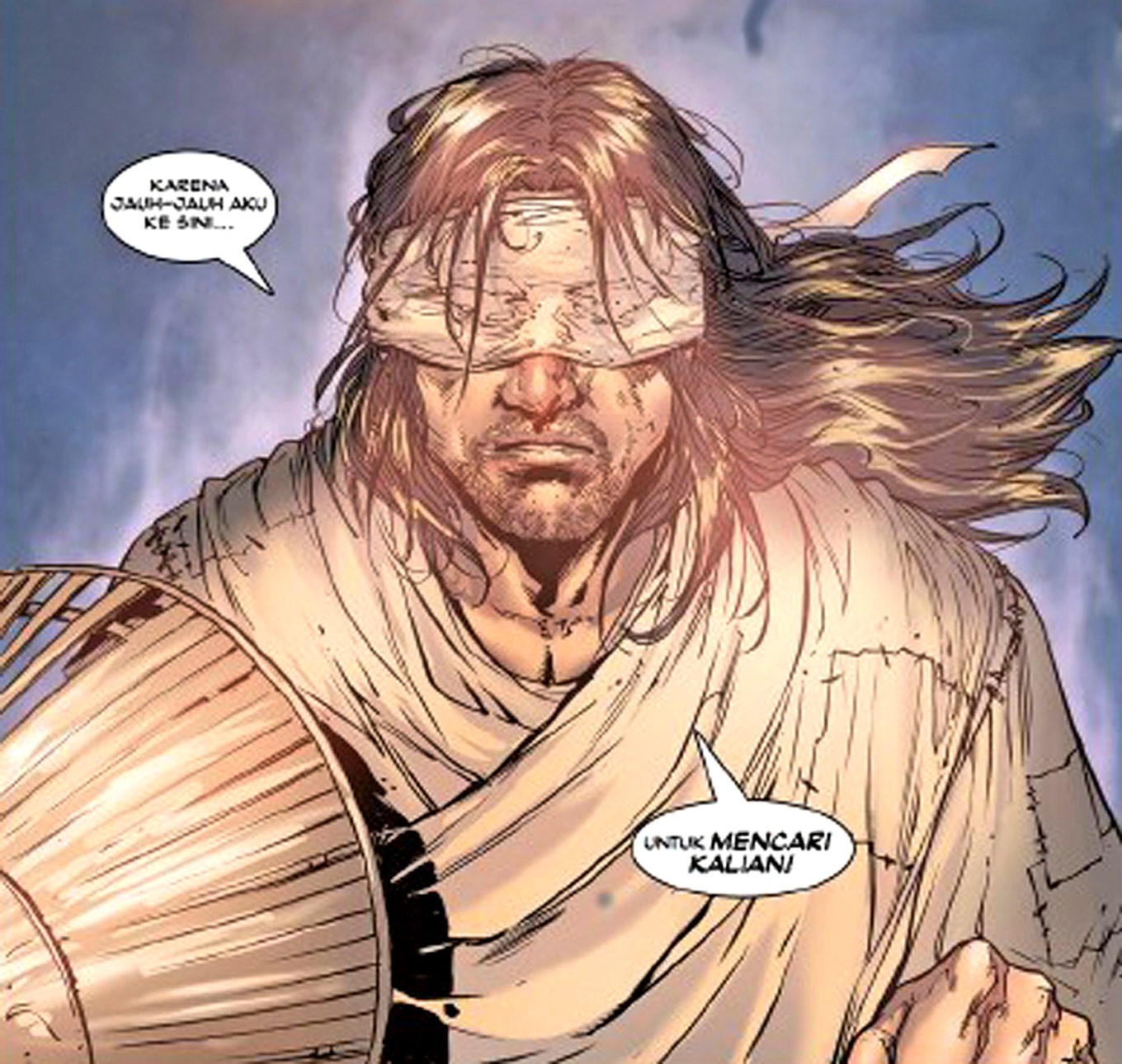Popular Reads
Top Results
Can't find what you're looking for?
View all search resultsPopular Reads
Top Results
Can't find what you're looking for?
View all search results'Si Buta Dari Gua Hantu' goes digital
One of Indonesia’s most popular comics is making a comeback in digital form.
Change text size
Gift Premium Articles
to Anyone
O
ne of Indonesia’s most popular comics, Si Buta Dari Gua Hantu (The Blind Warrior From the Ghost Cave), is making a comeback in digital form.
The new Si Buta, originally penned by Ganes TH, is also going through a different creative process this time around.
Old-school Indonesian comics such as Si Buta were handled by one person in terms of visuals and storytelling. This time, Bumilangit Komik as the copyright holder of Si Buta, has assigned several people different tasks in processing the comic. These are comic creators Iwan Nazif and Is Yuniarto, as well as script writers Oyasujiwo and Aji Prasetyo.
The official Facebook page of Bumi Langit Komik has been routinely publishing the new Si Buta comics throughout several seasons, with 13 to 15 episodes per season. Aji, a Malang-based comic artist who once represented Indonesia in the 2015 Frankfurt Book Fair in Germany, handled seasons three and four.
Aji, who is usually known for his illustrations, said he really enjoyed his assignment as a script writer in the new Si Buta series
“As writers, we have creative freedom,” he said at his coffee shop in Malang recently.
Aji writes the script on a storyboard, which can then be easily picked up an illustrated by Iwan.
The first two seasons are about the origins of a character named Barda Mandrawata and how he turns blind. Oyasujiwo penned these seasons and he based his works on Ganes’ original version.
In season three, Aji created a new historical space for Si Buta, who is always accompanied by a monkey called Kliwon.
“Ganes never mentioned the era of the blind hero’s adventures, but the costumes shown in the comic strips indicate the Dutch colonial times of the 1800s,” Aji said.
Aji also tried to create a new universe for the character. He finally decided on the 1870s, when the Dutch conducted their cultuurstelsel (forced planting) policy on indigenous Indonesians. This offers a new arena of operation for Si Buta other than his vengeful motive from the original comics.
“This time, Barda’s help is sought by a group of oppressed people somewhere in West Java,” Aji said.
“Based on history, a famine broke out in 1850 and a revolt occurred in Banten, West Java, in 1888 due to serious land conflicts,” he added.
So, the blind warrior Barda responds by helping people fight land owners and their guards.
As always, Aji said, there were always pros and cons when a classic work like Si Buta took on a new form and a new narrative.
“We are trying to educate readers that even comics still have to adapt with the test of time,” he argued.
One thing’s for sure: incredible displays of martial arts will still be Si Buta’s main ingredient, like the old version from Ganes, Aji said.
Several scenes, for example, are quite bloody, featuring severed body parts and gushing blood as Barda beats and slashes his way through battle after battle. This comic belongs in the young adult category and has a warning label.
Aji emphasizes the intelligence of Barda, whose instinct and fighting skills are the result of years of meditation and training instead of an alien or supernatural gift.
“This is our character and culture,” Aji said.
But his hero is still human in nature.
“He even stumbles when fighting, because he’s a blind man,” Aji said.
Besides land conflict, season three also touches on issues surrounding the environment — but as they were relevant to our ancestors, with astral spirits watching over trees, water springs and mountains.
“When they aren’t sanctified, these places are finally destroyed by capitalists,” he said.
For Aji, a product of art should be able to convey a message and respond to social issues rather than serve as mere entertainment.
“Through Si Buta’s adventures, readers will follow the awakening of the nation’s sense of independence, which began to arise by the late 1800s,” he said, hoping that the other Indonesian comics could also offer new stories to broaden readers’ horizons.











